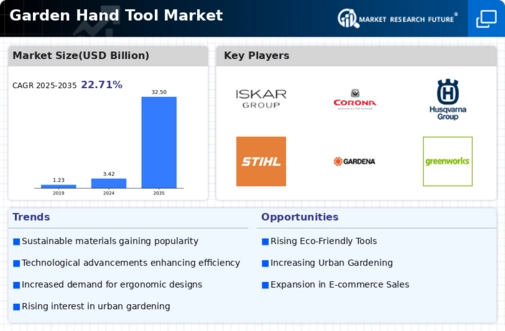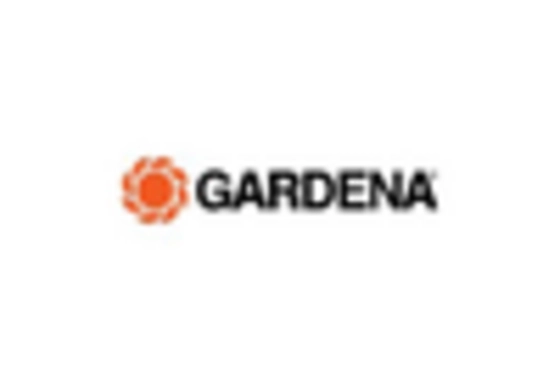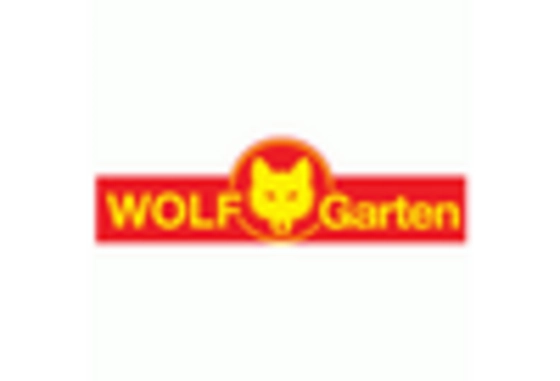Increased Interest in Gardening
The rising interest in gardening among various demographics appears to be a primary driver for the Garden Hand Tool Market. As more individuals seek to cultivate their own plants, whether for aesthetic purposes or food production, the demand for hand tools has surged. Recent surveys indicate that approximately 55% of households engage in some form of gardening, which translates to a significant market opportunity. This trend is particularly pronounced among millennials and Gen Z, who are increasingly drawn to sustainable living practices. The Garden Hand Tool Market is likely to benefit from this growing consumer base, as these individuals often prioritize quality and functionality in their gardening tools.
Rise of Eco-Friendly Gardening Practices
The rise of eco-friendly gardening practices is significantly influencing the Garden Hand Tool Market. As consumers become more environmentally conscious, there is a growing preference for tools made from sustainable materials. This shift is evident in the increasing demand for tools that are biodegradable or produced from recycled materials. Market analysis indicates that the eco-friendly segment of the garden tools market is projected to expand by 15% annually. This trend reflects a broader societal movement towards sustainability, which is likely to continue shaping consumer preferences in the Garden Hand Tool Market.
Urbanization and Limited Space Gardening
Urbanization is driving a trend towards limited space gardening, which is impacting the Garden Hand Tool Market. As more people reside in urban areas with restricted outdoor space, there is a growing need for compact and efficient gardening solutions. Tools designed for small gardens, balconies, and indoor gardening are becoming increasingly popular. Market Research Future indicates that the demand for such tools is expected to rise by 25% in the coming years. This shift not only opens new avenues for product development but also encourages innovation within the Garden Hand Tool Market, as manufacturers adapt to the needs of urban gardeners.
Technological Advancements in Tool Design
Technological advancements in the design and manufacturing of garden hand tools are reshaping the Garden Hand Tool Market. Innovations such as lightweight materials, improved ergonomics, and multifunctional tools are becoming increasingly prevalent. For instance, tools that incorporate smart technology, such as moisture sensors or ergonomic grips, are gaining traction among consumers. Market data suggests that the segment of ergonomic tools is expected to grow by 20% over the next five years. These advancements not only enhance user experience but also promote efficiency in gardening tasks, thereby driving sales in the Garden Hand Tool Market.
Growing Popularity of Gardening as a Hobby
The growing popularity of gardening as a hobby is a notable driver for the Garden Hand Tool Market. Many individuals are turning to gardening as a means of relaxation and personal fulfillment. This trend is reflected in the increasing sales of gardening tools, with reports indicating a 30% rise in tool purchases over the past year. The hobbyist segment of the market is particularly lucrative, as these consumers often seek high-quality, specialized tools. As gardening continues to be embraced as a leisure activity, the Garden Hand Tool Market is poised for sustained growth, catering to the diverse needs of hobbyist gardeners.


















Leave a Comment